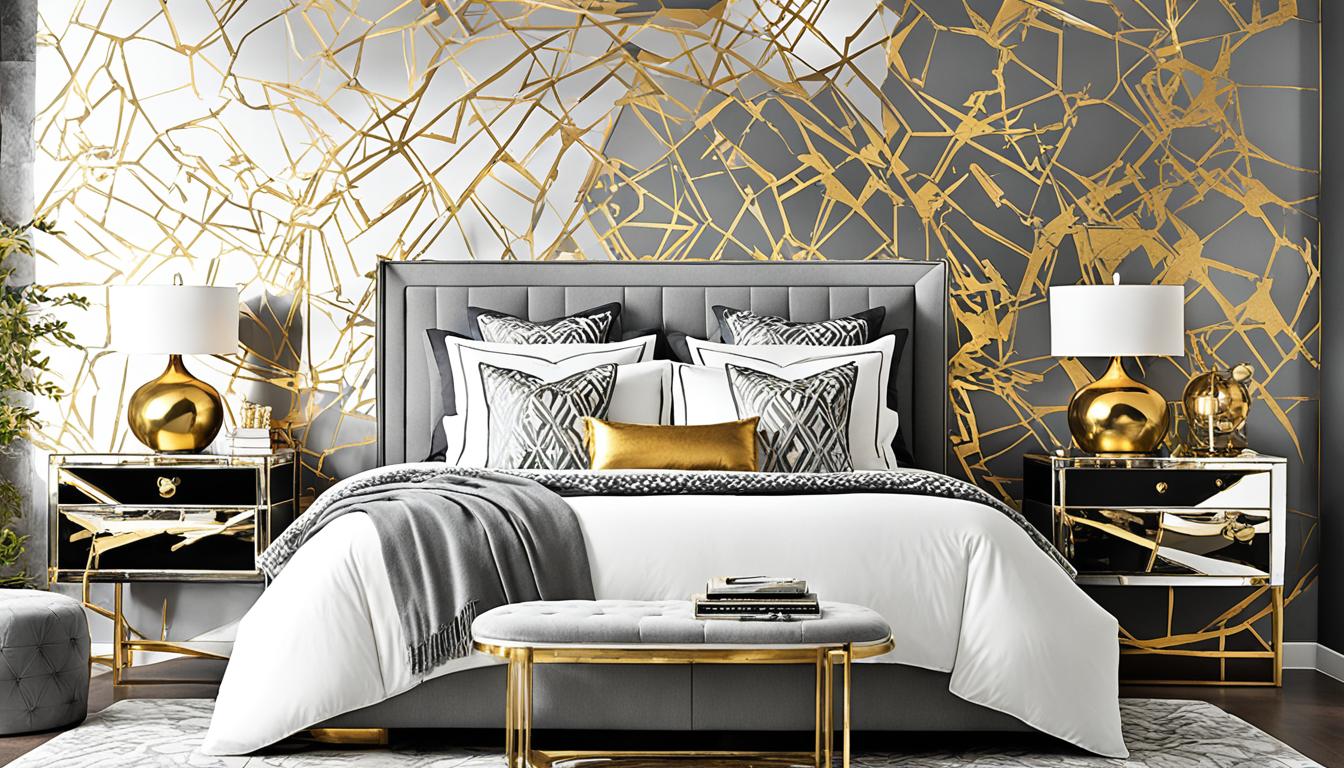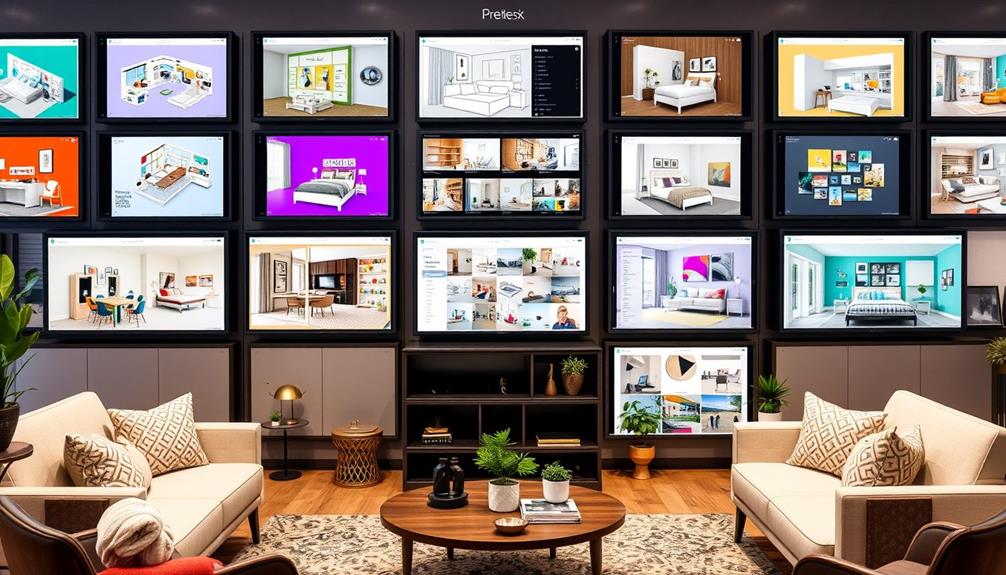Your living room is more than just a space; it’s the heart of your home, where you and your loved ones gather for movie nights, share stories, and create cherished memories. As such, knowing how to interior design your living room is essential to ensure it is not only welcoming but also functional and visually pleasing. A well-executed living room design reflects your individual style while promoting comfort and usability.
To achieve this, consider implementing effective interior design tips that can prevent common pitfalls, such as overcrowding with furniture or mismatched styles. By prioritizing thoughtful layout and selecting the right elements, you can create an inviting atmosphere that resonates with your personality and enhances your living experience.
Key Takeaways
- Use a large area rug (9×12 or 10×14) to define the space and accommodate furniture.
- Add extra seating, such as chairs, to foster conversation and comfort.
- Incorporate hidden storage solutions like bookshelves and benches to reduce clutter.
- Ensure appropriate coffee table sizing for functionality and balance with the sofa.
- Replace matching furniture sets with varying shapes and textures for visual interest.
- Utilize layered lighting, including table and floor lamps, to enhance ambiance.
- Display meaningful objects and artwork to personalize your living room design.
Understanding the Role of Your Living Room
The living room serves a vital role within your home, acting as the primary gathering space where family and friends come together. This area is often the heart of your household, making the living room importance undeniable. Several factors contribute to creating a harmonious and inviting atmosphere, making gathering space design essential for enhancing social interactions and relaxation.
The Living Room as a Central Gathering Space
When designing a living environment, consider the layout and functionality of the space. Recommended walkway space between large furniture pieces is 30″ to 36″, or at least 18″-24″ if space is limited. The arrangement directly influences how you and your guests move around and engage with one another. Ensuring no less than 3.5′ and no more than 10′ of space between seating allows for comfortable conversations.
The Importance of a Well-Designed Environment
Creating a well-thought-out living room design enhances aesthetic appeal while improving the overall experience for everyone. Sofas should ideally be pulled out 3-5″ from the wall to allow breathing room, and a coffee table should be at least half the length of the sofa. The ideal distance between a sofa and a coffee table lies between 16″ and 18″, promoting both comfort and functionality.

Focus on key elements like area rugs. An area rug should be sufficiently large to accommodate at least the front legs of the sofa and all chairs. For larger rooms, about 24″ of space is recommended between the wall and the rug, while 10″-18″ is suitable for smaller spaces. These thoughtful details lead to a more cohesive and inviting living environment, setting the stage for warm gatherings.
How to Interior Design Your Living Room
Transforming your living room involves thoughtful planning and self-assessment. Before making any design decisions, it is important to assess your living room space, focusing on its size, shape, and existing features like windows and fireplaces. Understanding how you plan to use the space is vital. Will it serve as a zone for relaxation, a gathering spot for friends, or a bustling family area? By pinpointing your lifestyle in interior design, you establish a strong foundation for your personalized living room design. Consider the color palette, furniture layout, and decorative elements that align with your lifestyle and preferences. Once you have a clear vision for your living room, seek inspiration from interior design blogs, magazines, and websites. These resources can provide valuable interior design business tips and help you refine your ideas to create a cohesive and stylish living space that reflects your personality and meets your functional needs.
Assessing Your Space
Take a moment to evaluate your living room’s dimensions. Furniture arrangement can significantly influence how the space feels. Consider the flow of movement, allowing enough room for people to navigate comfortably. Start by focusing on the sofa, as it often remains the largest piece and dictates the overall layout. Measure the intended area to avoid buying oversized or undersized furniture. Aim for a cohesive look by leaving an 10 to 20 inches of bare floor around your area rug to enhance the overall design.
Determining Your Needs and Lifestyle
Your needs play a key role in shaping your personalized living room design. Visualize how you want to interact within this space. Interior designer Kelsey Haywood recommends creating a budget first, helping you maintain focus and avoid overspending. Once your budget is established, explore furniture options that keep durability and aesthetics in mind. Choose items that reflect the essence of your household while considering elements like wear and tear. Adding real houseplants breathes life into the living area, nurturing an inviting atmosphere.

| Design Element | Recommendation |
|---|---|
| Sofa | Largest piece; dictates layout |
| Area Rug Size | Leave 10-20 inches of bare floor around edges |
| Lighting Types | Combine ambient, task, and accent lighting |
| Color Palette | Use 60/30/10 rule for balanced aesthetics |
| Budget Tips | Use pillows, throws, and ornate furniture legs for enhancement |
Starting with a clear plan maximizes the potential of your living room. Emptying the space can reveal hidden opportunities, allowing you to redesign with fresh eyes. Explore local antique shops or flea markets for unique decor pieces, adding character without breaking the bank. With these strategies, you can create a personalized living room design that perfectly aligns with your lifestyle.
Living Room Interior Design Tips
Transforming your living room into a stylish and inviting area involves careful consideration of color schemes and textures. By selecting the right color schemes for living rooms and utilizing layering textures design tips, you can create a harmonious atmosphere that reflects your personality and suits your lifestyle.
Choosing the Right Color Schemes
Choosing an effective color palette is crucial in interior design aesthetics. A mix of light and dark colors can create a dynamic look, introducing depth and balance to the space. Incorporating contrasting neutrals adds richness and warmth, making the area feel welcoming. You can choose various color combinations, extending this palette to furniture, soft furnishings, and decor elements. For a cozy ambiance, dark paint colors can be particularly attractive, imparting an intimate feel to the living room.
Layering Textures for Depth and Interest
Incorporating various textures into your design enhances the room’s comfort and aesthetic appeal. Begin by mixing materials like wood, leather, and soft fabrics for a cozy feel. The use of mid-tone fabrics in seating contributes to durability while maintaining visual interest. Consider layering textured cushions, throws, and patterned rugs, which not only add energy to the space but also help in concealing stains. This approach makes your living area inviting and enjoyable while offering a tactile experience that resonates with occupants and visitors alike.

| Material | Characteristics | Recommended Use |
|---|---|---|
| Wood | Brings warmth | Furniture, flooring |
| Leather | Stain-resistant, susceptible to scratches | Couches, chairs |
| Denim | Durable | Upholstery |
| Area Rugs | Adds appeal, hides spills | Living room floors |
| Carpet | Forgiving surface | Child-friendly homes |
Utilizing these design elements not only creates a space where style meets comfort but also fosters a welcoming environment that reflects your unique taste.
Modern Living Room Design Ideas
Designing your living room with modern living room decor opens the door to a variety of exciting possibilities. Embracing contemporary decor styles helps you create an inviting atmosphere that reflects your personal style. Instead of traditional matching furniture sets, a more diverse approach can elevate your space’s aesthetic.
Incorporating Contemporary Decor Styles
Contemporary furniture trends highlight the importance of mixing and matching eclectic design styles. For instance, many modern designs incorporate a range of elements, blending textures and colors to achieve a unique look. A recent analysis of living room design ideas indicates that:
| Design Idea | Percentage of Ideas |
|---|---|
| Colorful couches as focal points | 15% |
| Grand pianos as statement pieces | 30% |
| Art displayed on TVs | 5% |
| Wood paneling | 5% |
| Combining modern and vintage pieces | 25% |
| Light and bright interiors | 10% |
| Minimalistic design | 5% |
| Playing with patterns | 5% |
Breaking Away from Matching Furniture Sets
Abandoning the idea of uniform furniture can lead to creative freedom. By choosing pieces that complement each other rather than match, you can create dynamic compositions. Think about incorporating a mix of traditional and modern elements like velvet sofas paired with sleek coffee tables. A bold color palette can also add excitement, particularly through the integration of natural materials like leather and wood.

Ultimately, envisioning your living room with modern living room decor requires an adventurous spirit. The outcome should resonate with your individuality while embracing innovative design. Modern living rooms thrive on unique expressions, embodying the joy of eclectic design styles complemented by contemporary furniture trends.
Small Living Room Decorating Ideas
Transforming a small living room can be a fun challenge. Implementing effective small living room space solutions starts with smart furniture arrangement for living room areas. This involves creating distinct zones to enhance functionality while keeping a cozy atmosphere. You can achieve this by utilizing rugs or strategically placing furniture to define spaces.
Maximizing Space with Smart Furniture Arrangement
In small environments, selecting the right pieces is vital. Multi-functional furniture serves dual purposes and is an excellent choice. For instance, a sofa that folds out to a bed or an ottoman that opens to store items can help you save space. Consider the layout by arranging furniture in a way that promotes flow and symmetry. This not only looks appealing but also makes your living room feel more relaxed.
Utilizing Hidden Storage Solutions
Storage plays a crucial role in maintaining the tidiness of a small living room. Explore hidden storage ideas such as high-up shelves that maximize vertical space without encroaching on your floor area. When choosing furniture, look for designs with built-in storage options, such as coffee tables with drawers or benches with compartments. Creating a clean, uncluttered look is essential for making your living area more inviting.

| Furniture Type | Functionality | Storage Solutions |
|---|---|---|
| Storage Sofa | Sofa with additional pull-out drawers | Under-seat storage for blankets or accessories |
| Wall Shelving | Utilizes vertical space effectively | Displays decor and keeps the floor clear |
| Ottoman | Serves as a seat or coffee table | Hidden compartment for remote controls or magazines |
| Coffee Table | Central piece for gathering | Includes drawers or shelves for stashing items |
| Accent Chairs | Additional seating without crowding | Stackable or foldable designs for easy storage |
Lighting Ideas for Living Rooms
Lighting plays a vital role in enhancing the beauty and functionality of your living room. When you explore various lighting ideas for living rooms, consider the concept of layered lighting. This design technique encompasses different types of lighting that work together to create a well-balanced atmosphere. By thoughtfully incorporating ambient, task, and accent lighting, you ensure your space is both inviting and practical.
The Importance of Layered Lighting
Layered lighting techniques are essential for any well-designed living room. Interior designer Abigail Ahern suggests incorporating eight different sources of lighting to achieve a balanced look. Start with ambient lighting, which provides overall illumination, forming the foundation of your lighting scheme. Enhance this layer with task lighting to illuminate areas where specific activities occur, such as reading or working. This combination sets the stage for a cozy, functional atmosphere.
Using Accent Lighting to Enhance Ambiance
Accent lighting design adds depth and character to your space. Utilize fixtures such as decorative wall sconces and stylish table lamps to create a warm environment. Statement pieces, like unique chandeliers or large cluster lights, can become focal points that draw the eye. Picture lighting can highlight artwork or sculptures, showcasing your personal style. Consider the use of dimmers to control the tone and quality of light, establishing the perfect ambiance for any occasion. By strategically layering these lighting sources, your living room can transform into a welcoming retreat.

Accessorizing Your Living Room
Accessorizing your living room allows you to showcase your unique taste and style. Transform your space by incorporating living room accessories that hold special meaning. Consider adding meaningful decor pieces such as family photographs, travel souvenirs, or handmade items to create a personal touch. These elements not only enhance the atmosphere but also spark conversation and connection with guests.
Showcasing Meaningful Objects
Choosing the right accessories can give your living room a distinct personality. Opt for pieces that resonate with you, making the environment feel warm and inviting. Integrating meaningful decor pieces can reflect your journey and values. Consider an eclectic mix that combines both modern and vintage items to tell your story effectively.
Hanging Artwork for Personality and Impact
When it comes to hanging artwork, following specific tips can help you make a significant impact. Select pieces that complement your existing decor and be mindful of scale regarding available wall space. A well-placed artwork can serve as a focal point that draws the eye and creates balance. Remember to arrange a variety of sizes and styles to maintain visual interest.

| Tip | Description |
|---|---|
| Mix Textures | Layer different materials for added depth, such as combining wood, metal, and textiles. |
| Balance Colors | Coordinate artwork and accessories to complement your chosen color palette for cohesion. |
| Vary Heights | When hanging multiple pieces, vary heights to create a dynamic wall display. |
| Utilize Negative Space | Leave space between objects to avoid a cluttered look and make each piece stand out. |
Conclusion
In summary, your living room design is a crucial aspect of your home, serving not only as a gathering space but also reflecting your personal style. By thoughtfully assessing your space and making deliberate choices regarding color, lighting, and texture, you can achieve an inviting and well-rounded area. High-impact elements, such as artwork and accessories, play a vital role in personalizing your space and adding the finishing touches that elevate overall design.
Remember, transforming living areas is about adaptability and creating a welcoming atmosphere that changes with you and your family. Focusing on lighting and smart furniture arrangements can enhance functionality while accommodating your lifestyle needs. Ultimately, a well-structured living room provides a cozy retreat and an elegant space for entertaining guests, making it worthwhile to invest time and resources into this significant area of your home.
Embrace the journey of designing a living room that embodies warmth and individuality. From the choice of soft textures to the vibrant splash of color, your personalized touches will transform your living room into a sanctuary that resonates with comfort and style.









